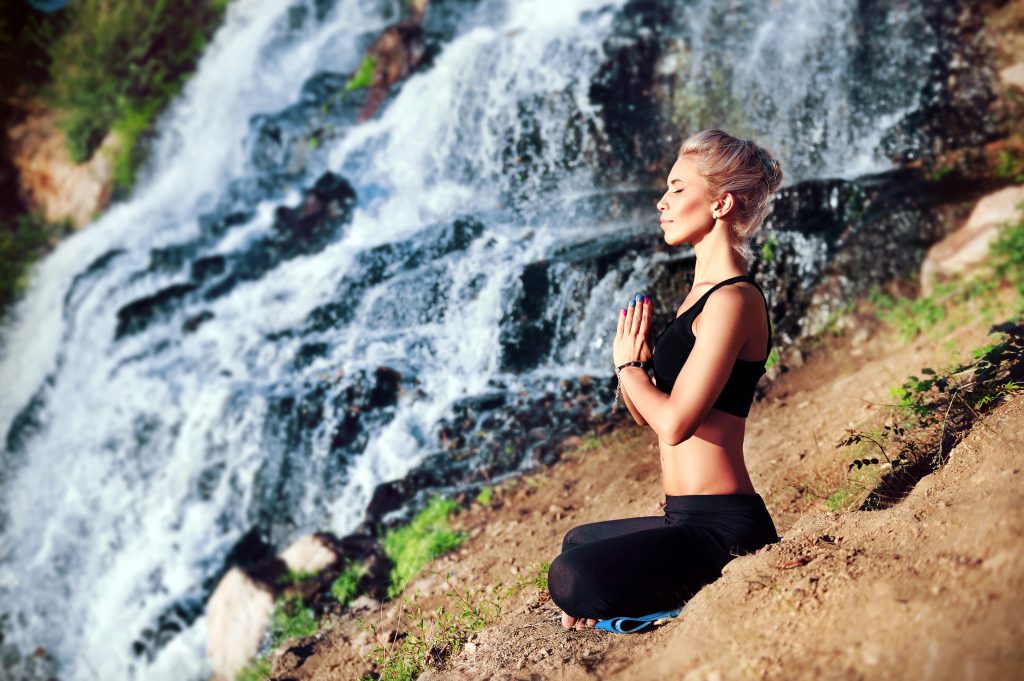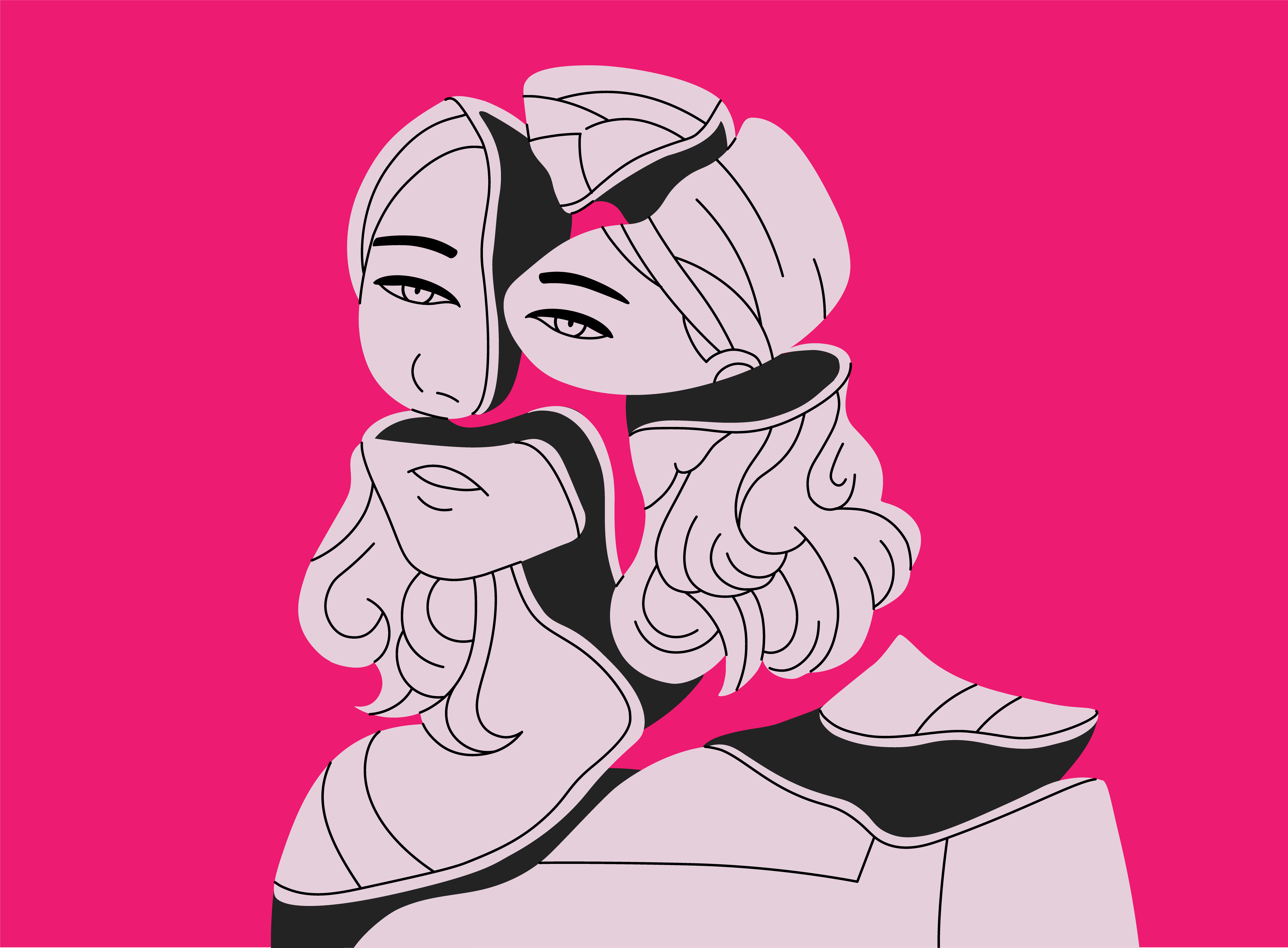Why have yoga teachers become chirpy purveyors of cheer? Maybe it’s the combo of cognitive behavioral therapy, insipid self-help shortcuts, and capitalistic exploitation of Buddhist teachings that have America trying (and buying) to “fake it till you make it.” The root of this self-absorption is the mistaken approach to yoga as an emotional magic bullet. The images of 20-something waifs in skimpy yoga shorts meditating by waterfalls imply that we have only to think it and so it will be. However, the reality is that the yoga community needs to catch up with new research questioning the power of positive thinking to change the self and the world.
The yoga community needs to catch up with new research questioning the power of positive thinking.

Don’t get me wrong—yoga changes us. Asana does remove blockages and transforms mood. Pranayama does balance energy and leads to equanimity. We do build grit and resilience in the practice of withdrawing our senses. Meditation does sustain us with deep rest and a chance to reboot the vital body. I am not questioning the effectiveness of ancient traditions and their tools for self-mastery. But I am questioning the timer we set on that process.
Doubt is inherent in the origins of yoga, practiced by skeptics and rebels questioning the dogma of their own time. And the dogma that begs interrogation at this moment in American yoga is the yoga of the quick-fix. A round of alternate nostril breathing cannot repair devastating loss, illness, or trauma, much less deeply entrenched societal unfairness.
We need to cultivate a collective skepticism about the power of an optimistic outlook to produce immediate personal and societal results. We need to recognize and honor the effort over months and seasons and years and lifetimes required for change.
Yoga. Takes. Time.
Just as blocks in the fascia won’t be untangled by one wild night with a TB12 Vibrating Pliability Roller, psychic knots are equally stubborn. The yamas and niyamas, or guidelines for behavior in our relationship to self and world, aren’t a quick panacea. They address our behaviors, not our feelings. These teachings do not instruct us to beat our emotions into a fluffy, upbeat meringue. Instead, by controlling our actions over time, we are lucky to experience an organic deepening, maturation, and settling of the psyche. It’s an excruciating practice that produces slow results if we can show up day after day for the deliberate discipline of it.
The yamas and niyamas address our behaviors, not our feelings.
Maybe it’s time we revisit the ethical teachings of yoga’s first and second limbs, one by one, with these thoughts in mind.
Ahimsa
Non-harming adheres sublimely to classic sutra form, an umbrella that encapsulates and summarizes all that follows. The practice of non-violence is at the very heart of all the other nine guidelines; if we practice peacefulness, all the others unfold naturally. Inevitably, when we discuss all the yogic tenets, we are using nonviolence as a litmus test and an ultimate goal. The word “sutra” actually means thread, and the basic principle of ahimsa is the thread that runs through them all and the one which ties them together. It is, as many have pointed out, impossible to achieve completely. We squash organisms under our feet as we walk. The supreme and lofty goal is the one that serves as an aspiration, and its limits and successes are easier to examine through the lens of each of the following nine tenets.

Satya
Truthfulness, second only to non-harming! When fortune’s wheel slams us down, the belief that suffering can be easily wrestled into a glib positivity reinforces despair and a sense of inadequacy. Research by Joanne Wood found that repeating positive self-statements actually made those with low self-esteem feel worse. We can’t always, in short, fake it, even if it were ethical to do so. Observing truthfulness requires, well, observing! We must face and examine what is sinister in and around us, troubleshooting potential pitfalls, and making space for conflict. Truthfulness is not pretending we feel differently than we do. Feigning warmth or spunk is a form of self-denial and counterfeit. Not only do we betray that precious tether to our authentic experience, but we deceive others.
Asteya
This brings us to non-stealing. What, precisely, is stolen in the sing-song trickery of asana classes taking place in gyms far and wide? In the endless hashtagged photos of plenitude and optimism on social media? (Google #blessed, if somehow you’ve missed out on the trend.) Perhaps it’s trust. If we can’t trust one another with our darkness, our sorrow, our boredom, our resistance, then where is the intimacy among seekers necessary for community and support? We steal the potential for genuine intimacy and safety. We are robbing others of the chance not only to perceive who we are in our full vulnerability, but the right to feel safe in their own human frailty. To force cheer is to deny ourselves and others the chance to hold hands in this crazy enterprise of living as a human being.

If we can’t trust one another with our darkness, our sorrow, our boredom, our resistance, then where is the intimacy among seekers necessary for community and support?
Brahmacharya
Somewhat counter-intuitively, to dive right into that true experience of darkness and sorrow is at the very heart of learning to moderate our senses. We can’t find balance on the see-saw of attachment and aversion if we are stuck on the upswing. Controlling our senses is to stand firm on the central axis and witness it all. We have to resist cherry-picking the happy stuff and allow equal airtime for the glum, the mediocre, the downright stupid, the sting and the shock and the muck. We work with those realities to discover hard-earned grace. Then we can open ourselves to connecting with others, including all their real sadness and wreckage. When we allow that not everything in everyone is perfect, we find surprise and miracle and humor and sometimes even beauty in idiosyncrasy. When we examine the masters of this art, like Victor Frankl or Immaculée Ilibagiza, we bear witness to extraordinary emotional and moral labor. The notion that we can attain the grace without the work is pure hubris.
Aparigraha
If you want to find the Euclidean geometry of clinging, you might as well draw a straight line between cheerfulness and possessiveness. To protect our fragile foibles from others’ view is to train the public eye on a false identity. I’m thinking of gratitude lists on social media, bottling personal tragedy like divorce or the loss of a job, concealing any physical injury or illness, and the relentless, insipid use of party trick poses to sell yoga. Inaccurate public witness lacquers on a persona that is itself (by willful design or no) a possession of the most dangerous kind. It slowly begins to get tangled up with self-esteem and, like Tolkien’s ring, begins to wield power not only over others but over its true victim: the one who fakes it.
Niyamas
The antidote lies in the Niyamas.
Saucha: The teachings on purity call for more than tongue-scraping; they call for a fearless witness of all that we are and the wake of our movement in the world.
Santosha: Simplicity is not complacency. Rediscovering contentment is hard work in the crazy, scattered chaos of the typical day. It is a form of psychological and practical streamlining, whittling down our attention to what is most important.
Tapas: We are meant to strive for more than a great handstand. Wearing on the outside what is genuinely inside requires the most serious effort, willpower, and passion for what’s real.
Svadhyaya: Self-study, in its major-league engagement, requires a kind of flexibility. Not the kind needed to get your ankle over your head; it is a flexibility of surrender. When we allow for the whole of our messy, conflicting, complex mortality, it is impossible to anticipate what an encounter with someone else might look like, how a project might turn out, whether our life will take one direction or another. It makes space for a daily rediscovery of spontaneity, which might be another translation for ishvara pranidhana, or surrender to the larger forces at work in the universe. Only then can we experience a kind of joy that doesn’t need to jettison sorrow, in our most solitary and in our most intimate moments.

The Greek root of enthusiasm, that thing everybody’s faking, is “en theos” – the divine within. Which is to say, our enthusiasm is the innermost sanctum of our human experience. If we can’t be true to this sacred world within, what can we call real?
Edited by Sarah Dittmore





